Introduction
The luxury retail sector has undergone significant transformations due to the rise of e-commerce, which has shifted consumer behavior and the traditional luxury shopping experience. Neiman Marcus Group, a prominent player in the luxury retail market, faced financial difficulties amidst dwindling sales and a substantial debt burden. In a landscape where even industry leaders like Farfetch had to consider drastic measures, such as selling to Coupang, Neiman Marcus Group knew decisive action was necessary.
The company's engagement with restructuring advisors reflected the proactive approach needed to navigate the rapidly evolving market. This article explores the challenges faced by Neiman Marcus Group, its restructuring process, and the lessons learned that can guide other organizations in similar situations. From debt management to asset valuation and creditor negotiations, this article delves into the key components of Neiman Marcus Group's reorganization plan and its post-bankruptcy prospects in the retail industry.
By understanding the strategies employed by Neiman Marcus Group, companies can gain insights into navigating financial headwinds and setting the foundation for future success in a rapidly changing market.
Case Study: Neiman Marcus Group Restructuring
The luxury retail sector has been grappling with the challenges of e-commerce, which has significantly altered consumer behavior by shifting the traditionally in-person luxury shopping experience to the digital sphere. Neiman Marcus Group, a venerable institution in the luxury retail market, found itself navigating tumultuous financial waters with dwindling sales and an onerous debt load. In an industry where even leading players like Farfetch had to contemplate drastic measures, such as selling to Coupang despite prior assertions of strong liquidity, Neiman Marcus Group's situation necessitated decisive action.
The transformation of work arrangements, as seen with Neiman Marcus' shift to a remote-work policy for a significant portion of its corporate workforce, underscored the broader shifts within the industry. Meanwhile, market dynamics hinted at the possibility of strategic consolidations, as evidenced by Neiman Marcus reportedly declining a merger with Saks Fifth Avenue, despite lengthy negotiations and a considerable offer. Such mergers could provide leverage against suppliers and reduce redundant costs in an increasingly competitive luxury landscape.
Against this backdrop, Neiman Marcus Group engaged restructuring advisors to chart a path forward. The process mirrored the proactive approach taken by Rite Aid, which initiated a voluntary court-supervised financial restructuring under Chapter 11 to reduce debt and enhance business transformation. Rite Aid's commitment to maintaining customer service and healthcare offerings during restructuring served as an example of how to navigate financial headwinds while keeping core operations intact.
In this context, the restructuring advisors' role for Neiman Marcus Group was not merely about immediate financial resuscitation but also about repositioning the company in a rapidly evolving market. The advisors' task was to craft a strategy that would not only address the immediate liquidity concerns but also lay the groundwork for sustainable growth in an industry where digital transformation and market consolidation are the new normal.
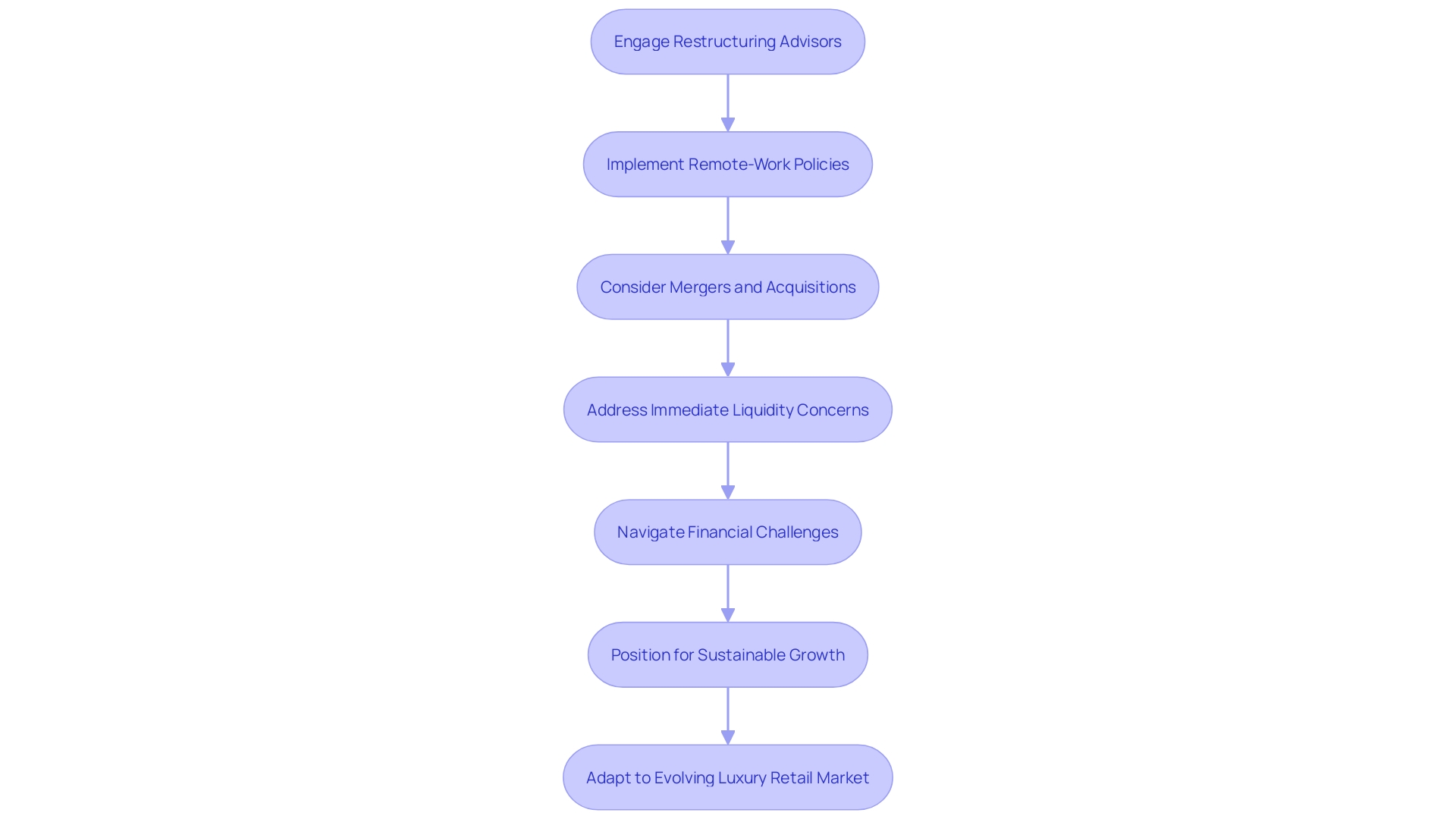
Background and Financial Challenges of Neiman Marcus
The landscape of upscale retail has been facing seismic shifts, and Neiman Marcus Group has not been immune to these challenges. The retail titan, known for its lavish offerings and affluent clientele, has navigated through a period of declining footfall and sales, a reflection of evolving consumer tastes and a fiercely competitive market. To compound these problems, the company has been servicing significant debt, a legacy of its ambitious expansion and previous acquisitions.
These financial hurdles demanded strategic maneuvers, and Neiman Marcus responded with innovative changes. For instance, they embraced a remote-work policy leading to approximately 40% of their corporate staff operating beyond the confines of their Dallas headquarters, a pioneering move amongst traditional luxury retailers. This shift, as reported by Business Insider, exemplifies how Neiman Marcus is rethinking its approach to not just survive but adapt in the post-pandemic retail environment.
Moreover, the retail giant found itself in the spotlight of merger speculations with Saks Fifth Avenue, a narrative that generated buzz but did not culminate in an agreement. Despite a substantial $3 billion offer, as detailed by The Wall Street Journal, the discussions between the two luxury behemoths stalled, leaving the industry pondering the potential synergies of such a union. A merger could offer a strategic advantage in negotiations with suppliers and streamline operations to tackle the growing dominance of luxury conglomerates and the direct-to-consumer trend.
The retail sector, particularly the luxury domain, has been grappling with the disruption brought on by e-commerce. Many established players, including Neiman Marcus, have felt the pressure to pivot and adapt. In an era where the likes of Farfetch have been making surprising alliances, as observed by Wedbush analysts, the urgency for traditional retailers to innovate is more palpable than ever.
As the industry looks towards the future, retail leaders are reimagining the role of brick-and-mortar stores and the overall shopping experience. The vision, as shared by industry executives with CNBC, is one of smaller, more efficient, and omnichannel-focused stores that are attuned to customer preferences. This insight aligns with the approach Neiman Marcus is taking to transform and future-proof its business amidst ongoing transformations in retail.
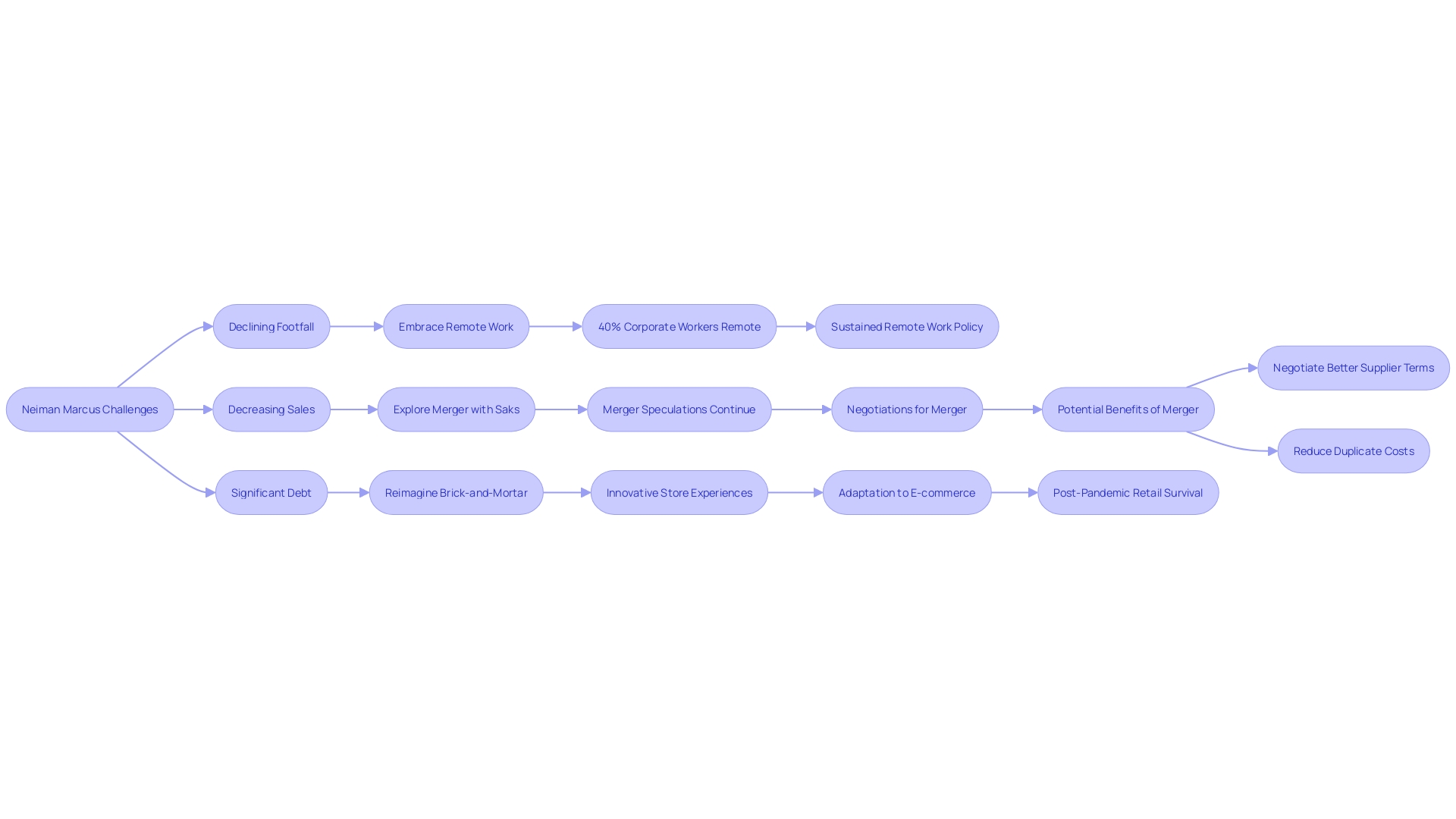
Debt and Acquisition History Leading to Bankruptcy
Neiman Marcus Group's trajectory towards bankruptcy was marked by strategic financial maneuvers that ultimately proved unsustainable. The retailer's history of significant debt accumulation began with its leveraged buyout in 2005, which was aimed at funding its ambitious acquisition strategy. However, the luxury department store's financial stability was compromised as sales faltered, and the burden of debt grew heavier.
This financial distress echoed the challenges faced by notable historical figures like Mark Twain and Veronica Lake, who similarly grappled with overwhelming debt due to risky investments and declining fortunes. In the case of Neiman Marcus, the inability to service its financial commitments culminated in a Chapter 11 bankruptcy filing, underscoring the risks inherent in aggressive leveraging practices.
Amidst these challenges, Neiman Marcus also navigated the complex dynamics of potential mergers and acquisitions. The company famously declined a substantial $3 billion takeover bid from Saks Fifth Avenue, highlighting the intricate considerations involved in such high-stakes negotiations. These discussions shed light on the strategic decisions facing companies in the luxury retail space, including the pursuit of synergies through consolidation and the negotiation of terms with powerful suppliers.
The involvement of tech giants like Amazon and Salesforce in the retail industry further complicates the landscape, as these players bring substantial capital and innovative business models to the table.
The retail industry has witnessed a series of rebirths and transformations, often involving the acquisition of storied brands by new owners seeking to leverage their legacy in the digital age. This approach has been exemplified by companies like Retail Ecommerce Ventures, which has taken stewardship of numerous well-known brands. However, the specter of bankruptcy looms large, as evidenced by the financial struggles of REV's Stein Mart brand, which has faced considerable challenges in bill payment, as reported by Creditsafe.
The tale of Neiman Marcus and its counterparts highlights the delicate balance between strategic expansion and financial prudence. It serves as a cautionary narrative for other organizations navigating the tumultuous waters of the retail industry.
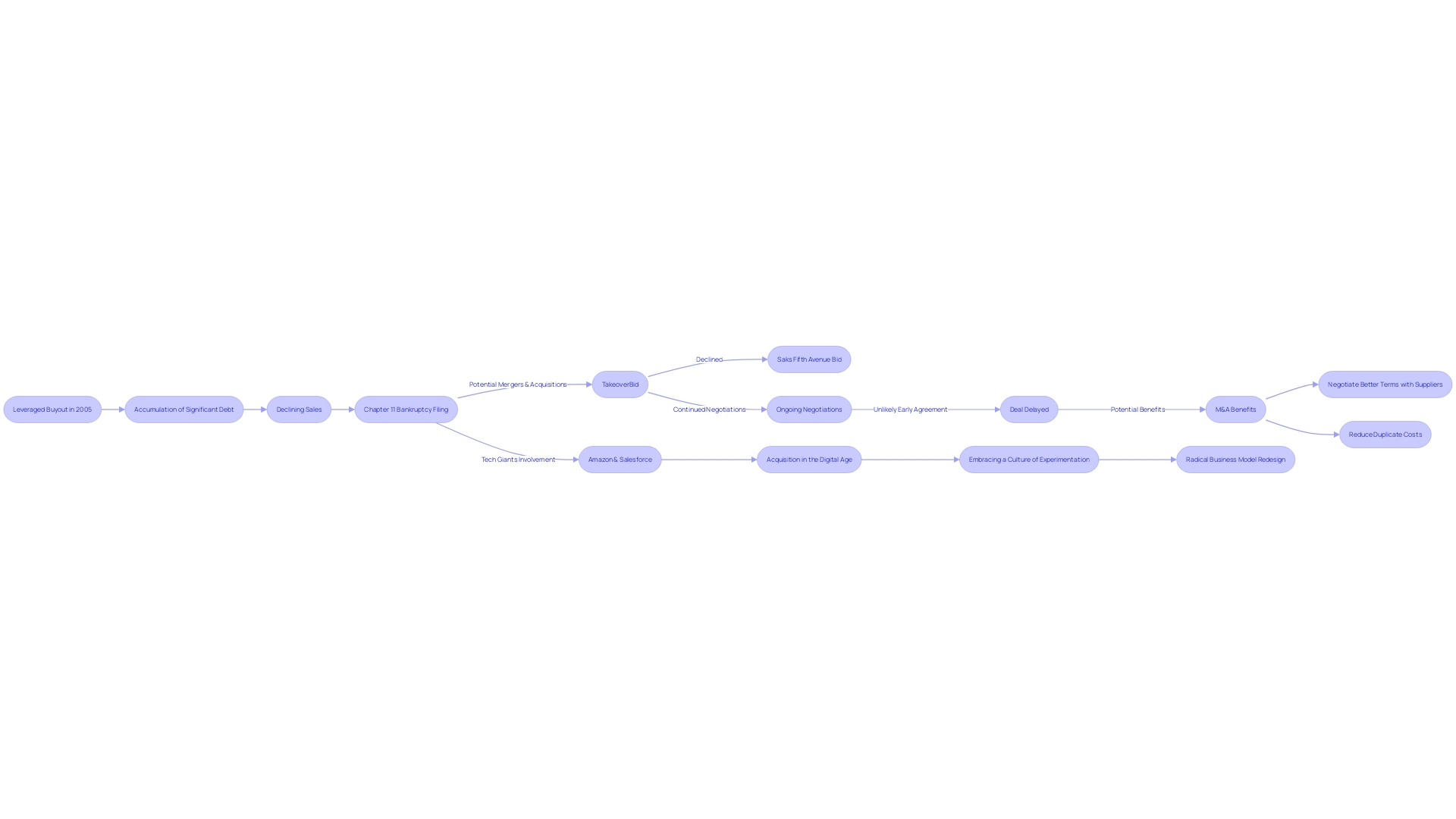
Chapter 11 Bankruptcy Filing and Reorganization Plan
The strategic maneuvers employed by Neiman Marcus Group during their Chapter 11 proceedings echo a growing trend among corporations facing financial headwinds. Companies like Cano Health Inc., WeWork, and Red Lobster have all embarked on similar journeys to alleviate debt burdens and pivot towards long-term viability. Cano Health, for example, initiated Chapter 11 proceedings with the support of its lenders and secured $150 million in new financing to fuel its transformation plan.
Similarly, WeWork's restructuring efforts, which included renegotiating leases and collaborating with financial stakeholders, culminated in the approval of its Plan of Reorganization, setting the stage for profitable growth and enhanced member experiences. Meanwhile, Red Lobster utilized Chapter 11 for operational streamlining, targeting a reduction in locations and a going concern sale, backed by a $100 million debtor-in-possession financing commitment.
These examples underscore the importance of a comprehensive reorganization strategy that includes debt reduction and operational optimization. For Neiman Marcus, the refusal of a $3 billion merger offer from Saks Fifth Avenue signifies a deliberate choice to independently navigate its financial restructuring. The luxury retailer's approach aims to optimize its store portfolio and amplify its online presence, a necessary pivot to meet the evolving consumer behaviors and preferences.
As the sector witnesses an uptick in Chapter 11 filings, the insights from these cases suggest a common theme: the necessity to enhance productivity and cash flow through strategic restructuring. This trend is expected to persist, with experts predicting continued Chapter 11 filings, influenced by factors such as the current rate of inflation and rising interest rates, which challenge companies to service their debt and maintain operations.
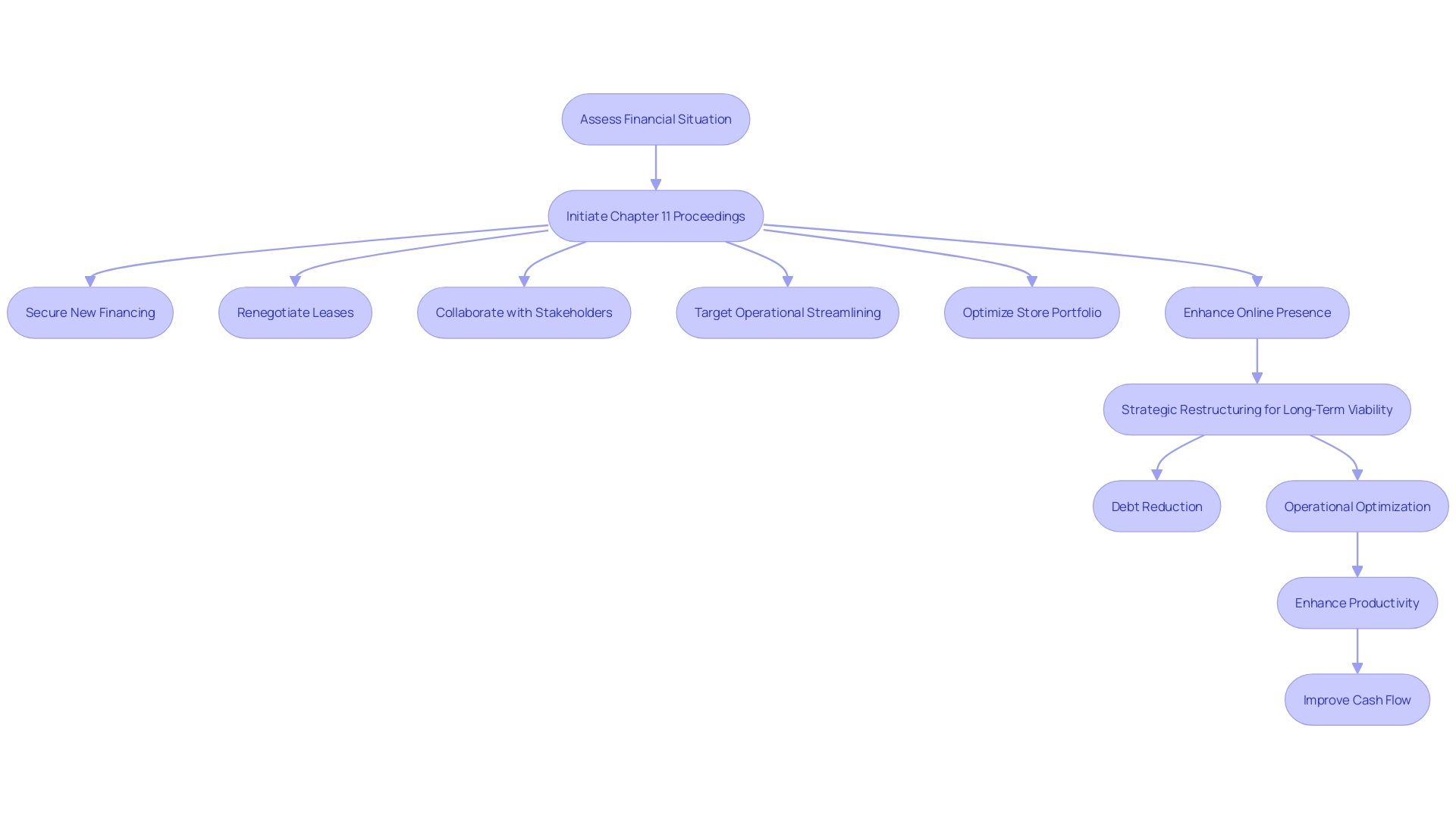
Key Components of the Reorganization Plan
In an ambitious restructuring strategy, Neiman Marcus Group meticulously crafted a multi-faceted approach aimed at revitalizing its financial and operational framework. The first phase involved intricate negotiations with creditors, focusing on alleviating the company's hefty debt load while securing pivotal financing to safeguard ongoing operations through the transition. Simultaneously, the leadership undertook a rigorous analysis of their store portfolio, pinpointing underperforming locations to refine their brick-and-mortar presence.
The final strategic piece entailed a significant enhancement of their online platform, a prescient move to harness the burgeoning power of e-commerce and align with consumer trends.
This decisive reorganization mirrors the proactive measures taken by Pacific Steel & Recycling, who, after a comprehensive examination of insurance claims data and severing ties with traditional provider networks, transitioned to a reference-based pricing model to combat surging healthcare costs. Similarly, Zara's integration of AI across its supply chain and inventory systems exemplifies how embracing innovative technology can streamline operations. Neiman Marcus' pivot to a remote-work policy further underscores the company's adaptability, reflecting a broader trend towards flexible work arrangements and potentially reducing overhead costs.
Valuation and Asset Liquidation Strategies
In a strategic move to address its financial challenges, Neiman Marcus Group conducted an exhaustive valuation of its assets to gauge their market worth. This critical step was not only about understanding the assets' value but also about exploring the viability of selling or liquidating assets to ameliorate the company's debt situation. Restructuring advisors were instrumental in this phase, providing astute strategies for asset liquidation that were designed to extract maximum value without significantly disrupting the core business functions.
These advisors were equipped with insights from the company's management and professional consultants, factoring in various projections and future event forecasts. While such projections inherently carry speculations and assumptions, which may not always align with actual outcomes, they provide a framework for the restructuring strategy. For example, the analysis of financial statements from over 1,500 listed companies showed widespread revenue declines and cash flow difficulties, particularly in the real estate and construction sectors, which underscores the importance of adeptly managing asset liquidity.
The experience of Marcus & Millichap, which has expanded to over 80 offices and provides access to a vast selection of commercial real estate listings, exemplifies the potential of strategic asset management. Similarly, The Goldman Sachs Group, through its multiple service segments, demonstrates the critical role that financial advisory services, including restructurings, play in navigating corporate financial health.
It's noteworthy that the process of restructuring and asset liquidation is not a simple endeavor. It involves extensive due diligence and decision-making, as highlighted by entrepreneurs who have successfully sold their businesses. The sentiment echoes in the business and financial realm, where advisors and firms alike strive for strategic decisions that are well-timed and independent, ensuring the most favorable outcomes in the face of uncertainties and market fluctuations.
Creditor Negotiations and Settlements
The strategic art of negotiation took center stage during Neiman Marcus Group's restructuring process. In a display of adept financial maneuvering, restructuring advisors and the management team orchestrated complex discussions with creditors. These talks were not merely about reaching an agreement; they were a sophisticated dance aimed at crafting settlements that would benefit all involved.
The discourse spanned across various critical aspects such as slashing debt, revisiting repayment schedules, and considering the possibility of creditors receiving equity in the reformed entity. This approach mirrors the success of WeWork's restructuring, where the company emerged triumphantly from Chapter 11, having significantly cut down its debt and renegotiated numerous leases, much to the satisfaction of its creditors and stakeholders. Their reorganization plan, validated by the bankruptcy court, set WeWork on a path to sustainable growth, showcasing the effectiveness of collaborative and strategic creditor negotiations in restructuring.
Post-Bankruptcy Ownership and Future Prospects
Amidst a dynamic retail landscape, Neiman Marcus Group has successfully navigated through a restructuring process that places them on a promising trajectory. The company has undergone significant ownership changes, with creditors transitioning into major equity stakeholders. This strategic move has enabled Neiman Marcus to alleviate its debt load and refine its operational model, setting the stage for renewed growth and market competitiveness.
The retail industry's evolution is characterized by businesses reimagining their brands through the acquisition of intellectual property. For instance, Overstock.com adopted the Bed Bath & Beyond brand to reinvent itself, while the new owners of Forever 21, including America's largest mall operators and Authentic Brands Group, revived the brand with innovative partnerships such as one with Shein.
The commercial real estate firm JLL highlights that the retail sector has reached near-peak occupancy levels not seen since before the 2008 Great Recession. Factors such as persistent consumer demand for in-person experiences, advancements in omnichannel retailing, and adaptation to e-commerce have contributed to this resurgence, creating lucrative opportunities for lenders and investors.
In parallel, a high-profile negotiation between Neiman Marcus and Saks Fifth Avenue reveals the complex dynamics of luxury retail mergers. Despite a substantial offer, Neiman Marcus has opted to remain independent for now, with the possibility of a merger still open. Such a union could streamline operations and strengthen bargaining power with suppliers.
As the industry looks ahead, retail leaders are focusing on building future-ready businesses. They emphasize the significance of technology, data analytics, and customer-centric approaches to reshape the retail landscape. According to CNBC's discussions with industry executives, the future holds smaller, more efficient retail spaces that are finely tuned to consumer preferences.
This strategic pivot by Neiman Marcus, along with insights from retail experts, underscores the transformative period in retail where innovation, consumer experience, and financial agility are key to thriving in an ever-evolving market.
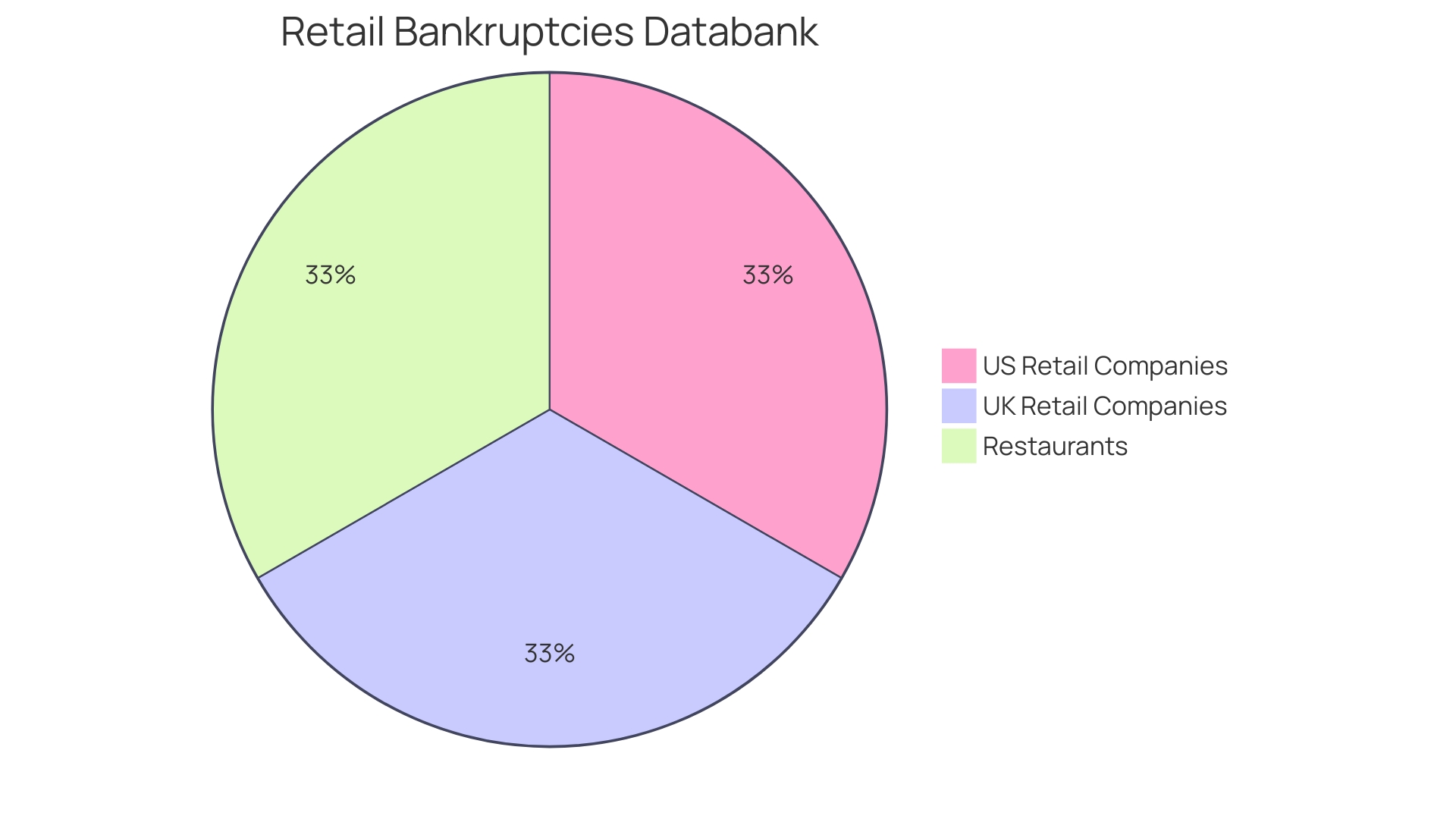
Lessons Learned and Best Practices in Corporate Restructuring
The Neiman Marcus Group's restructuring initiative reveals critical insights and best practices for organizations navigating financial difficulties. A strategic approach involving early detection of fiscal concerns, proactive management, and the engagement of seasoned restructuring advisors is key to averting a crisis. Advisors play a vital role in providing expertise and steering the restructuring efforts.
Moreover, maintaining open lines of communication and entering into constructive negotiations with stakeholders, such as creditors, is imperative to forge agreements that are advantageous for all parties involved and to achieve a favorable restructuring result. The outcome is enhanced by a collaborative strategy that extends beyond organizational limits, ensuring that all stakeholders are aligned in their objectives and that the restructuring process is a collective effort. These practices are not only crucial for the immediate resolution of financial challenges but also for setting a strong foundation for future stability and success.
Conclusion
Neiman Marcus Group's proactive and strategic approach to restructuring provides valuable insights for organizations navigating financial headwinds in the luxury retail sector. By engaging restructuring advisors, analyzing their store portfolio, enhancing their online platform, and negotiating with creditors, they have positioned themselves for renewed growth and market competitiveness.
The lessons learned from their restructuring process highlight the importance of early detection of fiscal concerns, proactive management, and collaboration with seasoned advisors. Open communication and constructive negotiations with stakeholders are imperative for achieving favorable restructuring results.
Neiman Marcus Group's success underscores the need for companies to adapt to changing consumer behaviors and embrace digital transformation. By optimizing their position in the market and leveraging the power of e-commerce, organizations can thrive in a rapidly changing retail landscape.
Ownership changes and refinements to the operational model have allowed Neiman Marcus Group to alleviate its debt load and set the stage for future stability and success. The retail industry's evolution presents opportunities for lenders and investors, with advancements in omnichannel retailing and near-peak occupancy levels.
In conclusion, by following the best practices of early detection, proactive management, collaboration with advisors, and embracing digital transformation, organizations can navigate financial challenges and position themselves for long-term success. Neiman Marcus Group's journey serves as a valuable guide for companies aiming to thrive in a dynamic and competitive luxury retail market.




